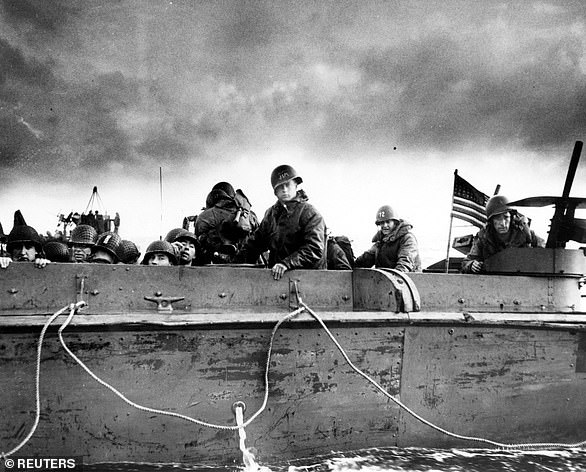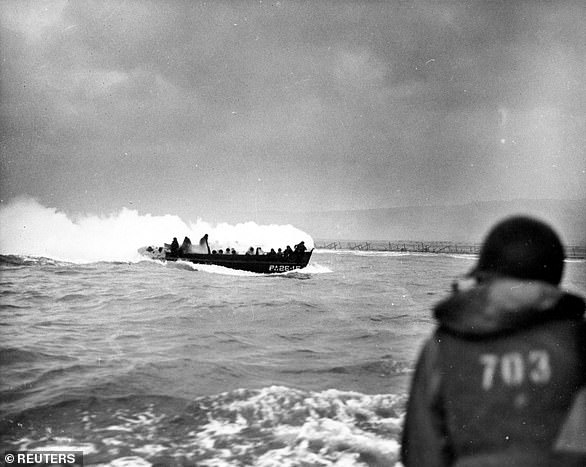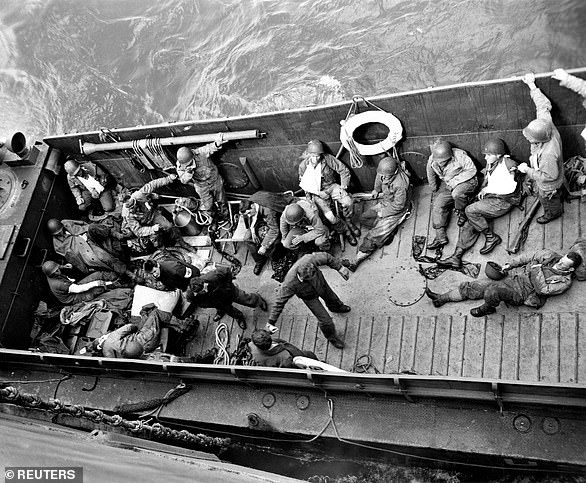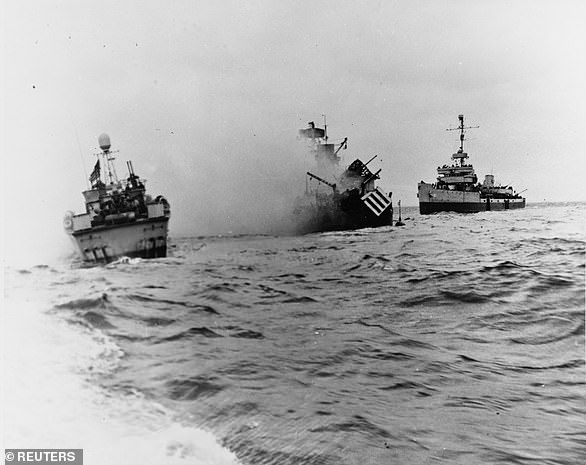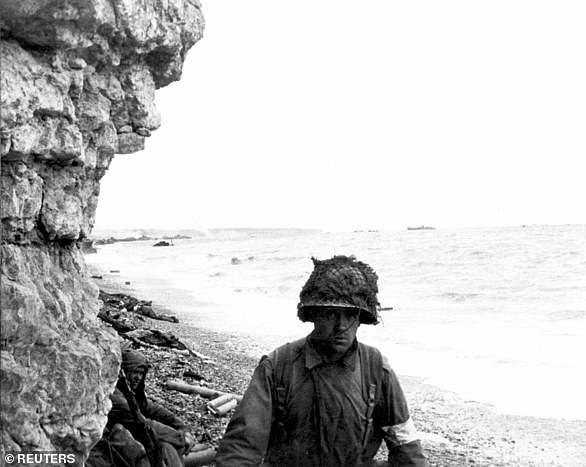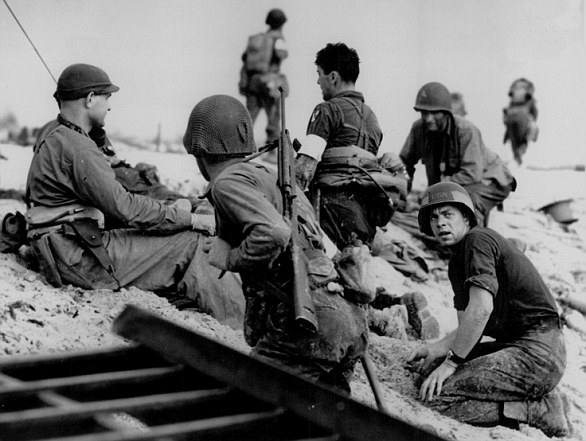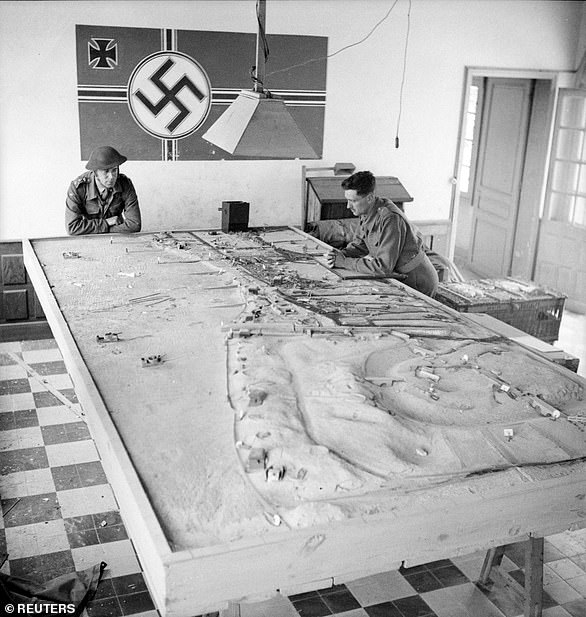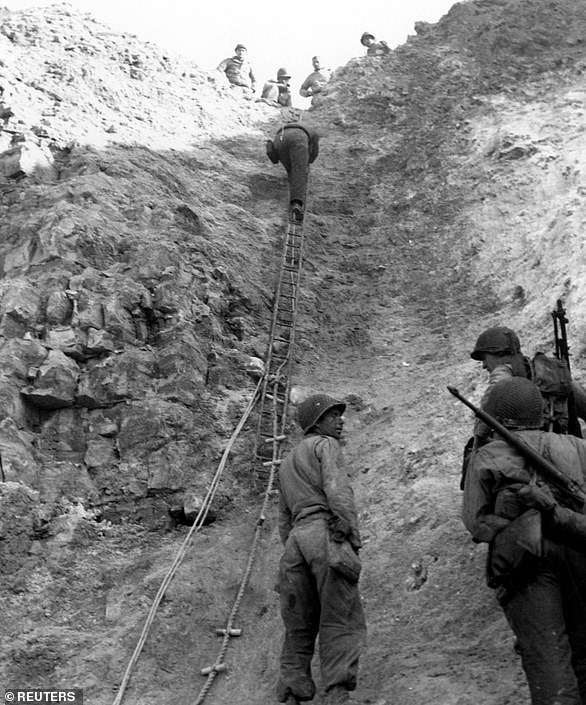On Might 19, 1944, two and a half weeks earlier than the ‘Operation Overlord’ landings happened, Princess Elizabeth spent the day together with her dad and mom inspecting airborne troops within the North of England.
The presence of the Heiress Presumptive with King George VI and Queen Elizabeth assured blanket media protection.
The occasion included one of many greatest glider landings ever made in Britain.
By the point the show had completed the aerodrome was crowded with a whole lot of the small plane.
Earlier within the day, the royal occasion watched as a number of hundred parachutists dropped from the sky in formation.
What readers didn’t know is that this go to – and one the earlier March the place Princess Elizabeth and her dad and mom inspected Scottish troops and armoured infantry items – was all a part of an elaborate ruse to confuse Adolf Hitler forward of D-Day.
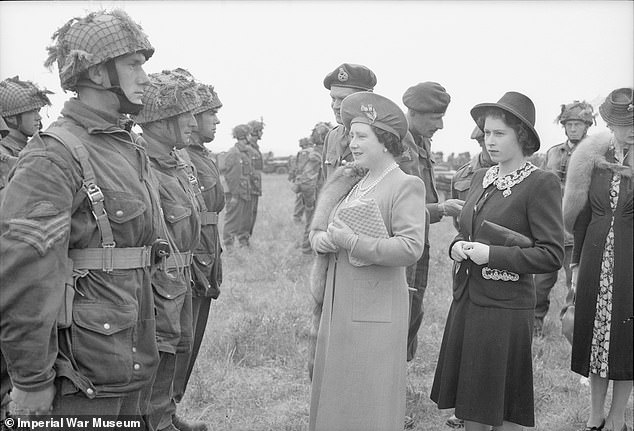
On Might 19, 1944, two and a half weeks earlier than the ‘Operation Overlord’ landings happened, Princess Elizabeth spent the day together with her dad and mom. The presence of the Heiress Presumptive with King George VI and Queen Elizabeth assured blanket media protection of the inspection of airborne troops within the north of England. Above: Princess Elizabeth stands subsequent to her mom as she speaks to troops, Might 19, 1944
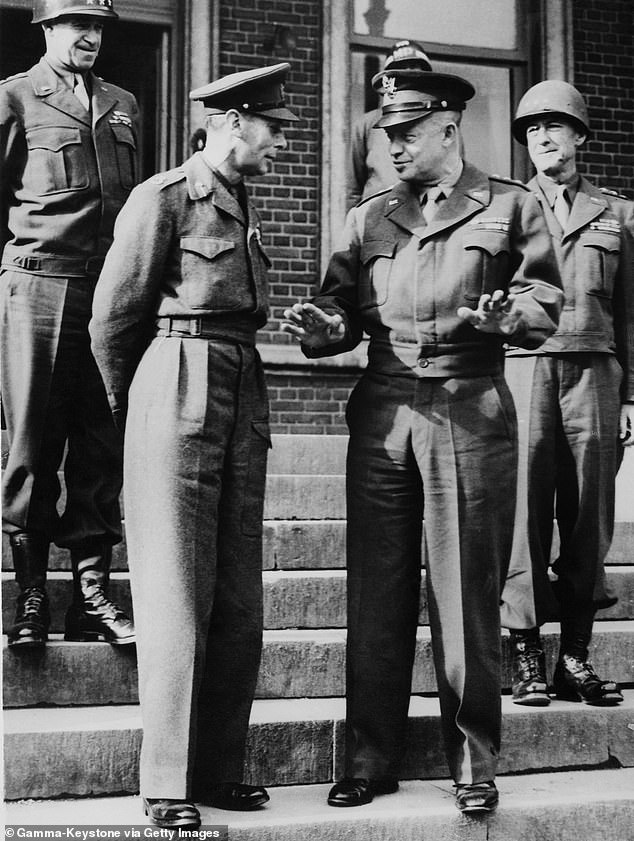
King George VI with Common Dwight Eisenhower, normal Omar Bradley and Common Courtney Hodges throughout a tour of the battlefronts in France, 1944
The Occasions had reported that, throughout their 1943 inspection, the royals had ‘watched troops scrambling down excessive scaffolding as a rehearsal for disembarkation from large invasion crafts into touchdown crafts.’
Protection of each engagements appeared in all the principle newspapers in addition to within the Courtroom Round.
The choice to contain the King and his household in what turned out to be a serious deception was made by former secret service officer Alan ‘Tommy’ Lascelles, the King’s new Non-public Secretary.
George VI was briefed on Operation Overlord and the invasion of France as early as October 1943.
The next February, two MI5 officers visited Buckingham Palace to satisfy Lascelles.
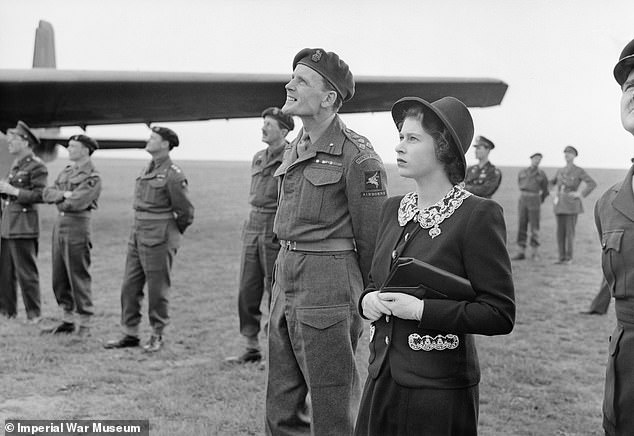
Princess Elizabeth throughout her inspection of paratroopers, Might 19, 1944

Queen Elizabeth speaks to paratroopers as her daughter Princess Elizabeth stands behind her, Might 19, 1944
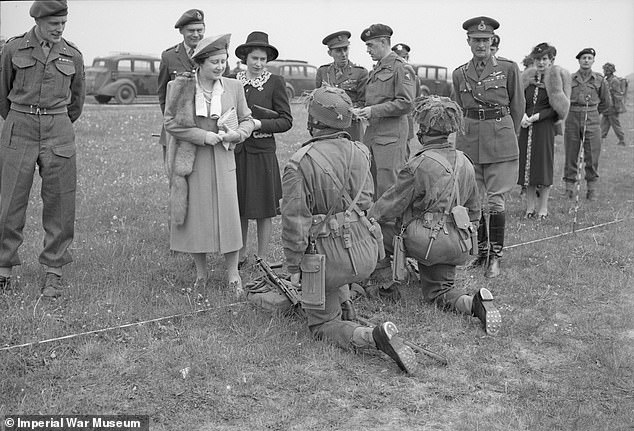
Princess Elizabeth and her mom Queen Elizabeth speak to Airborne forces, Might 19, 1944

Princess Elizabeth joins her mom as she talks to British troops, Might 19, 1944
They defined to him ‘how the King’s visits within the subsequent few months might help within the elaborate cowl scheme whereby we’re endeavouring to bamboozle the German Intelligence relating to the time and place for “Overlord.”‘
This navy deception was generally known as ‘Operation Fortitude’. It concerned the US navy commander George Patten build up an enormous bogus military within the SE of England.
Captured German brokers fed again inaccurate info to the Nazis that the landings can be at Calais.
In Might 1944, King George ‘reviewed’ these troops in a go to that was once more documented by the press.
Particulars of the King’s visits, together with street closures, was fed again to Germany to pinpoint the precise location of those manoeuvres.
Extra strategic deception happened on Might 10, when King George visited Scapa Circulate, close to the Orkney Islands, a hazardous journey since this physique of water was recurrently patrolled by German U-Boats.
Once more, the go to was reported. The entrance web page of the Every day Mail on Might 15 had the headline: ‘The King takes depart of his fleet’ because the ship sailed for battle.
This looked as if it would Hitler that an invasion of Norway can be the primary assault.
On Might 15 the King attended a briefing at St Paul’s Church, Kensington, with the Prime Minister, Winston Churchill, and Dwight D Eisenhower, the Supreme Commander answerable for Overlord.

King George VI’s secretary Alan Lascelles, generally known as Tommy, in January 1948. He was a former secret service officer
Earlier than the landings there was one thorny downside to be resolved. Each the King and Churchill wished to be current to witness the landings.
No British king had led his troops into battle since George II at Dettingen in 1743, which was in fact far much less of a hazard than modern-day warfare.
Lascelles shocked George VI into reconsidering when he requested the King if ‘he was ready to face the potential for having to advise Princess Elizabeth on the selection of her first Prime Minister, within the occasion of her father and Winston being despatched to the underside on the English Channel.’
To verify he wasn’t the one one to remain in London, George wrote to Churchill saying it was very unjust that the PM, having suggested the King to not go, ought to then go himself and steal the King’s thunder.
The previous struggle horse grudgingly backed down.
As an alternative, the 2 males met up with Eisenhower at this headquarters at Bushey hours after the invasion started on the morning of 6 June to review outsize maps exhibiting the place the substitute harbours had been being constructed on the seashores of Normandy.
That night time Lascelles wrote in his journal: ‘It’s too early to really feel something within the nature of jubilation; however the aid of feeling that the factor is at the very least below approach, and that every one the immense and complex preparations for it have been properly and really laid could be very nice.’
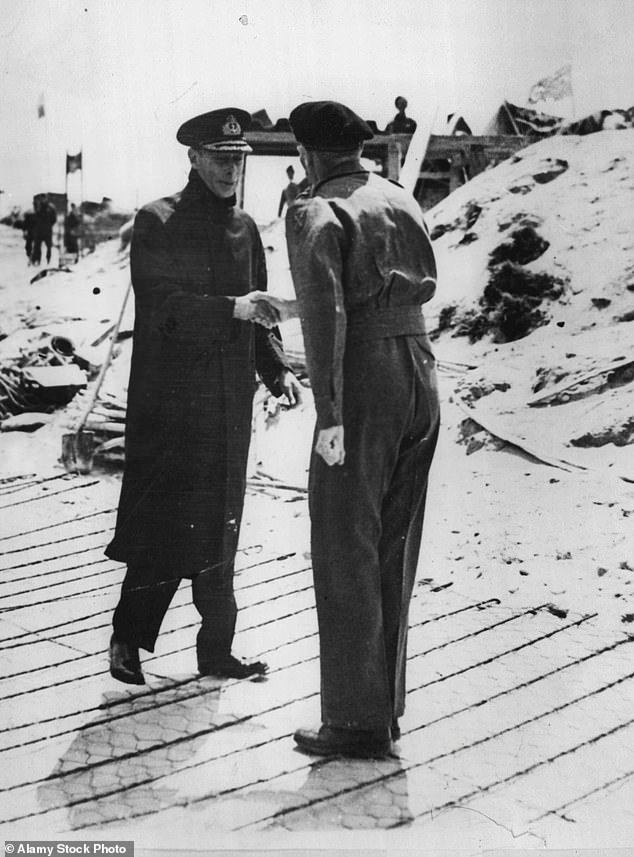
King George VI greeting Common Montgomery in Normandy on June 16, 1944
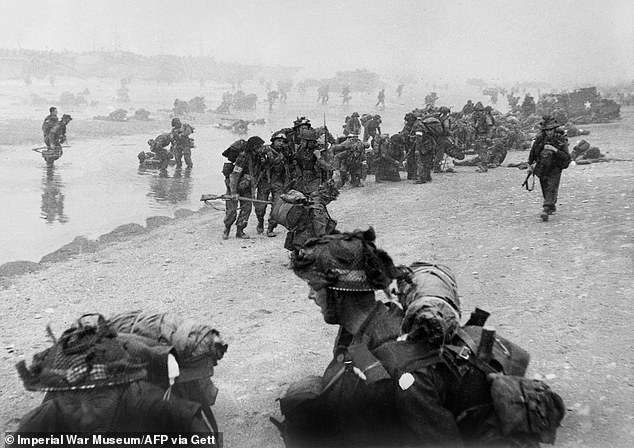
British troops take positions on Sword seashore throughout D-Day, June 6, 1944

Troops from the forty eighth Royal Marines at Saint-Aubin-sur-mer on Juno Seaside, Normandy, France, through the D-Day landings, June 6, 1944
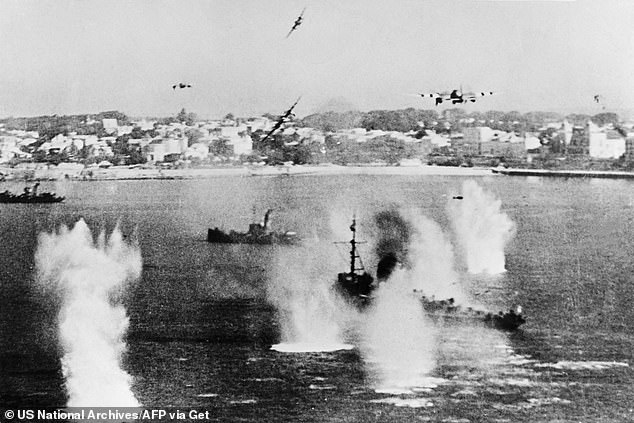
Allied planes bomb German boats to organize for the touchdown of troops, Normandy 1944
Little question the King was very a lot on his thoughts when he concluded ‘all those that have been entrusted with the very well-kept secret, look ten years youthful.’
One battle the King did win over Churchill was the battle for the microphone.
It was king George who broadcast to the nation on 6 June 1944, urging them to hope for victory: ‘After practically 5 years of toil and struggling, we should renew that crusading impulse on which we entered the struggle and met its darkest hour.’
Adolf Hitler as soon as known as the long run Queen Mom ‘essentially the most harmful girl in Europe’ due to the inspiring impact she had on morale.
Having been totally duped by the collective deception of the King and Queen in addition to their eldest daughter, by the point of the Normandy landings he might properly have realised too late that he was up towards essentially the most harmful household in Europe.



